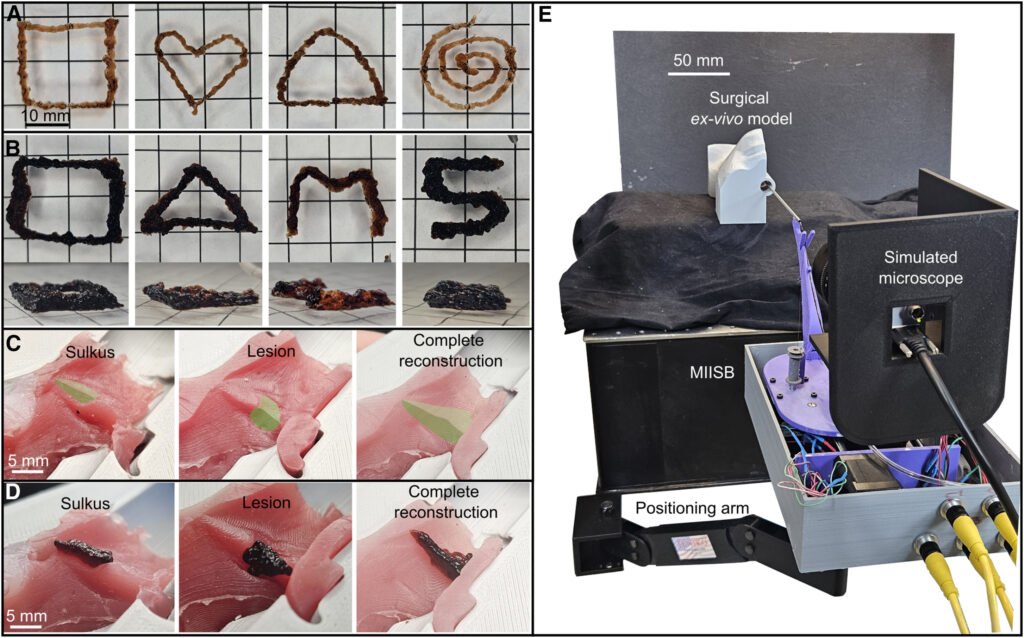A miniature bioprinter developed by researchers at McGill University is offering a new way to reconstruct vocal cord tissue during surgery. Designed to deliver healing hydrogels directly to damaged vocal folds, the device measures just 2.7 millimeters across, making it the smallest bioprinter ever reported. This innovation could help prevent post-surgical fibrosis, a common complication that stiffens vocal cords and impairs speech.
The bioprinter was engineered to fit within the narrow confines of a patient’s throat during laryngoscopic surgery. Inspired by the flexibility of an elephant’s trunk, the device features a tendon-controlled nozzle mounted on a surgical microscope. Surgeons can manually guide the printhead in real time to deposit hyaluronic acid-based hydrogel in precise 1.2 millimeter lines. The system was designed for intuitive control and seamless integration into standard surgical workflows.
To validate its performance, the team used the bioprinter to draw shapes like spirals and letters on flat surfaces, then tested it on simulated vocal fold models. The device successfully reconstructed tissue defects, including cavities left by lesion removal and full vocal fold reconstructions. Its predictable behavior and repeatable accuracy within a 20 millimeter working range make it suitable for delicate procedures.
Hydrogels are typically injected into throat tissue to promote healing, but manual injection lacks precision and can lead to uneven distribution. This bioprinter solves that problem by enabling targeted, uniform delivery. The researchers are now working on combining manual and autonomous control systems and plan to test the device in animal models before moving to human trials.
Press Release: Tiny 3D printer reconstructs tissues during vocal cord surgery
Abstract in Device: A continuum robotic bioprinter for in situ vocal fold repair

